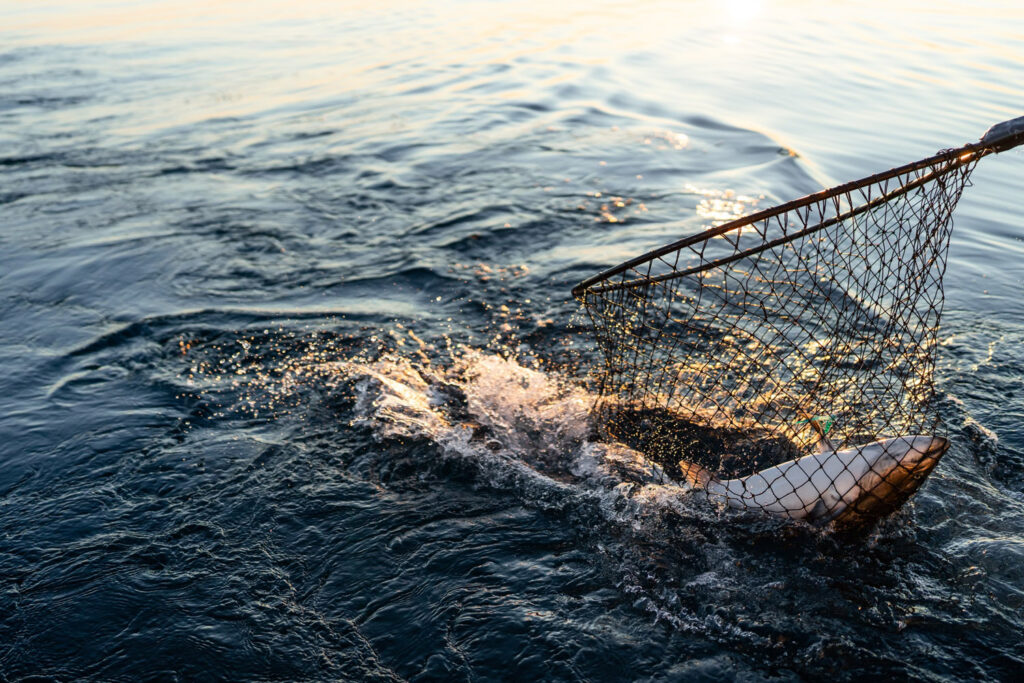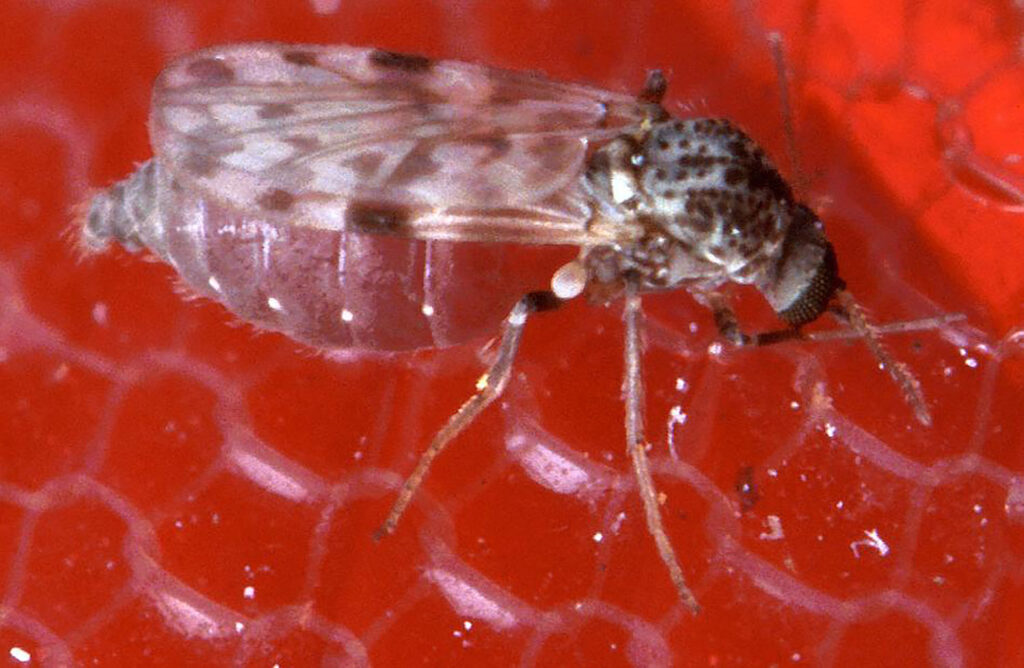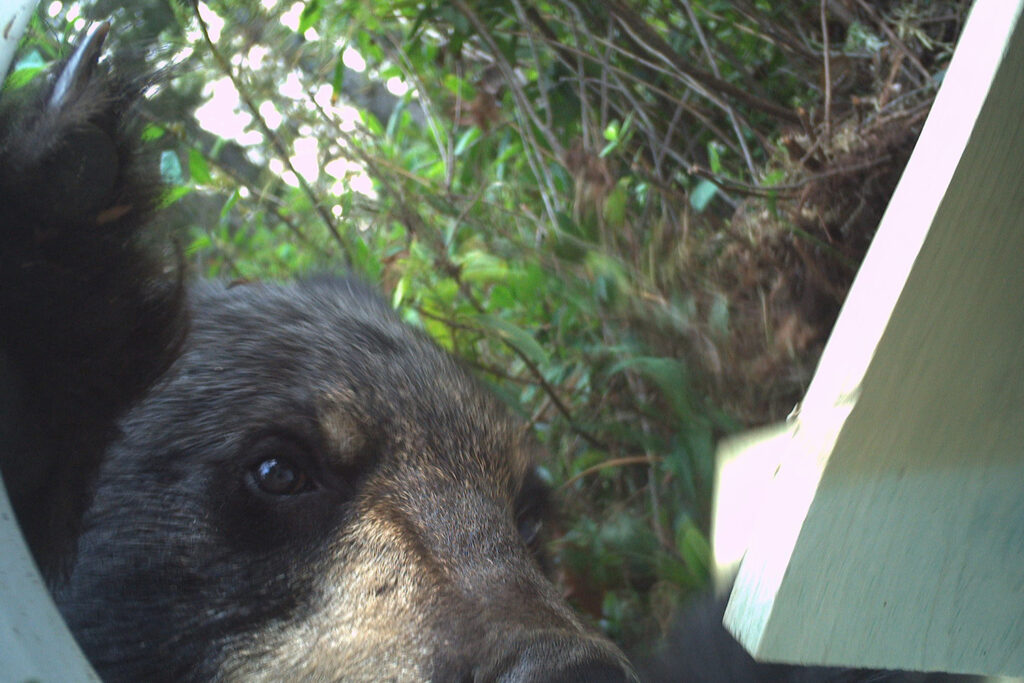When temperatures cool down, anglers drive their boats out to 200 feet of water with downriggers, and wade into shallow streams with fly rods, to hook into Michigan salmon.
How Did Salmon Get Here?
Michigan is known for its salmon fishing, but salmon are not a native species. Back in the 1960s, Coho salmon were released into rivers, like the Platte, followed by King, Atlantic, and Pink salmon. All of these have thrived in the Great Lakes, creating a whole new fishery. Now, salmon fishing in Michigan feels as natural as the opening day of deer season.
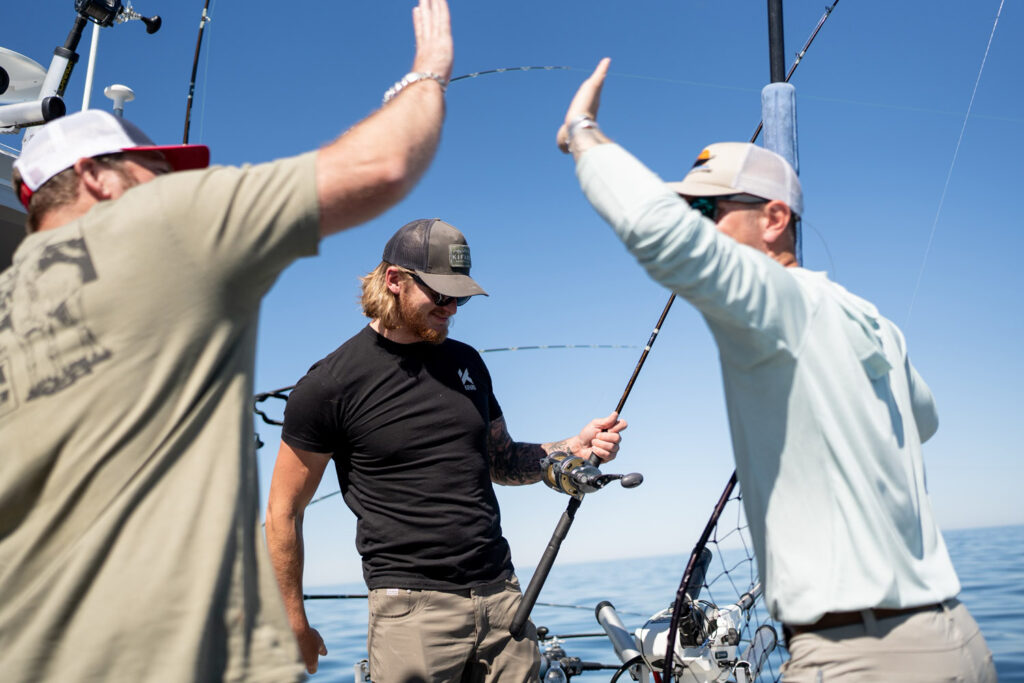
Though salmon generally prefer saltwater, they are anadromous; meaning, they can survive in both saltwater and freshwater, which allows them to thrive in the Great Lakes. Here, the lakes mimic the conditions of the Pacific Ocean, and the rivers provide ideal spawning grounds, supporting their life cycle.
Hooking Into Zombie Fish
Salmon fishing isn’t as simple as drowning worms. You’ve got to understand the fish. Salmon have a life cycle that starts in the freshwater rivers before they head out into Lake Michigan. After about three years, they return to their rivers to spawn and ultimately die.
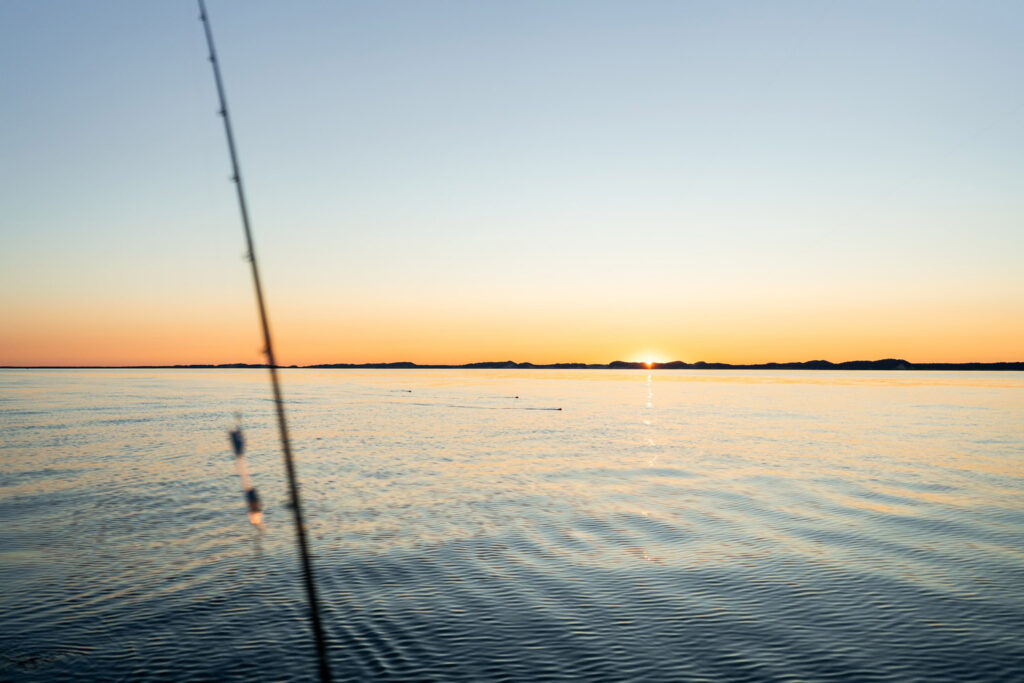
By the time August rolls around, the fish are already starting to change. Still in the lake, the females start to develop their eggs. The males start developing a hook-like jaw, and their teeth become more exposed. Their mouths start turning black and lose their famous silvery shine.
Once they hit the river, this process speeds up. The fish grow dark and ultimately rot from the inside out. They aren’t very edible at this stage, but they’re still really fun to catch. The final stages of their life are pretty dark. Late September into October, these fish are now referred to as “boots,” or “zombies,” as large chunks of skin have turned white and rotted off their sides. It’s gross to witness.
The tactics you use to catch salmon depend on what part of their spawning cycle they are in and, frankly, how close they are to death.
Timing the Runs
Salmon runs aren’t a year-round thing; you’ve got to hit them at the right time. So, that might mean sacrificing some time in the tree stand. The main salmon runs in Michigan happen between late August and mid-October. Here’s the breakdown:
Early Fall (Late August to September): The start of the King salmon run. These are fresh, chrome-colored fish, just starting their journey from Lake Michigan into the rivers. They fight hard and are still in good eating condition.
Mid-Fall (Late September to Early October): Peak salmon fishing. By now, both Kings and Cohos are running hard. They’re aggressive, hungry, and looking to spawn. This is when you’ll find the most anglers on the river, and it’s prime time to hook into a monster.
Late Fall (Mid-October to Late October): The tail end of the salmon run. By now, these fish are starting to look leathery and beat up from their long journey. But don’t let their appearance fool you—they still fight like mad. By this point, they aren’t the greatest table fair.
How to Catch ‘Em
Fly Fishing
Fly fishing for salmon is a test of skill and patience. Use big streamers and nymphs, dead-drifting, or swinging flies through deep pools. If you’re new to fly fishing, this can be challenging but incredibly rewarding. The key is finding the right depth and presentation. “Chuck and ducking” is a tactic used combining a larger egg pattern with some split shot or pencil weights. “Flossing” is basically glorified snagging, where you drag the fly across the fish’s mouth. As the season gets later, the fish are less likely to feed.
Bait Casting
Bait casters swear by spawn sacs and skein. You cast out, let it drift in the current, and wait for a strike. Kings especially go nuts for spawn, so it’s a go-to tactic for many anglers.
Spinner Fishing
Throwing spinners or spoons is a great way to cover a lot of water and trigger an aggressive reaction strike from salmon. Bright colors, like chartreuse, orange, and pink, are popular, and the flash from the lure can often drive these fish crazy, especially in clear water.
Reading the Water
These big, strong fish love deep pools, strong currents, and undercut banks. Areas downstream of rapids, deep holes, and bends in the river are best. Salmon will stack up here, resting before pushing through the next fast section. If you can find a spot like this, you’ll be golden.
Follow the bubble or foam line, where more oxygen is present in the river. Like spawning steelhead, they like the strong consistent current flowing through their gills.
Best Rivers for Salmon in Michigan
Michigan’s rivers are packed with prime hot spots to catch these monsters during the annual run. Here’s a rundown of the top salmon-fishing rivers across the state:
1. Manistee River
People come from all over the Midwest to fish the Manistee during peak salmon season. The lower stretches of the river are the best for fly fishing, bait casting, and spinner fishing. You’ve got long, deep pools and strong currents, perfect for targeting big Kings and Cohos. Tippy Dam is a popular destination and arguably one of the more accessible places to target salmon. Accessibility brings crowds, so be prepared. It gets weird.
2. Pere Marquette River
Well-known as the “PM,” this river is legendary. It’s one of the first rivers in Michigan where salmon were stocked, and its natural beauty makes it a popular destination. Getting to more remote areas might require a raft, drift boat, or jet boat, but it’s best to avoid the crowds.
3. Muskegon River
The Muskegon’s wide open spaces make it perfect for boat fishing, and it’s packed with salmon in the fall. Fly anglers and spinner folk flock to this river to chase giant Kings.
4. Grand River
Running right through Grand Rapids, the Grand River offers some urban fishing that will blow your mind. It’s one of the longer rivers and can produce some of the biggest Kings. It’s wild catching salmon with the city skyline in the background! The 6th Street dam with it’s fish ladder also is an easy spot to fish, but again, be prepared to share space with some wild folks.
5. Boardman River
This gem in Traverse City is small but mighty. It’s great for a more intimate fishing experience, especially if you’re into wading and getting up close and personal with these brutes.
6. St. Joseph River
Near the Indiana border, this river gets a killer run of salmon and steelhead in the fall. It’s ideal for people with boats, and the variety of spots along the river make it a popular choice for anglers looking to avoid crowds. The Coho population in the St. Joe over the years has been stellar.
7. Au Sable River
Known for its epic fly-fishing culture, the Au Sable offers more than just trout. Come fall, you’ll find salmon running upstream, and it’s a blast using lighter tackle to hook into these fish. This is a great option for those who want to experience fishing in a calmer, quieter setting than the Grand.
James Zandstra is an experienced outdoorsman with a passion for the Mitten State. Follow his work on X @TheFairChase1.
